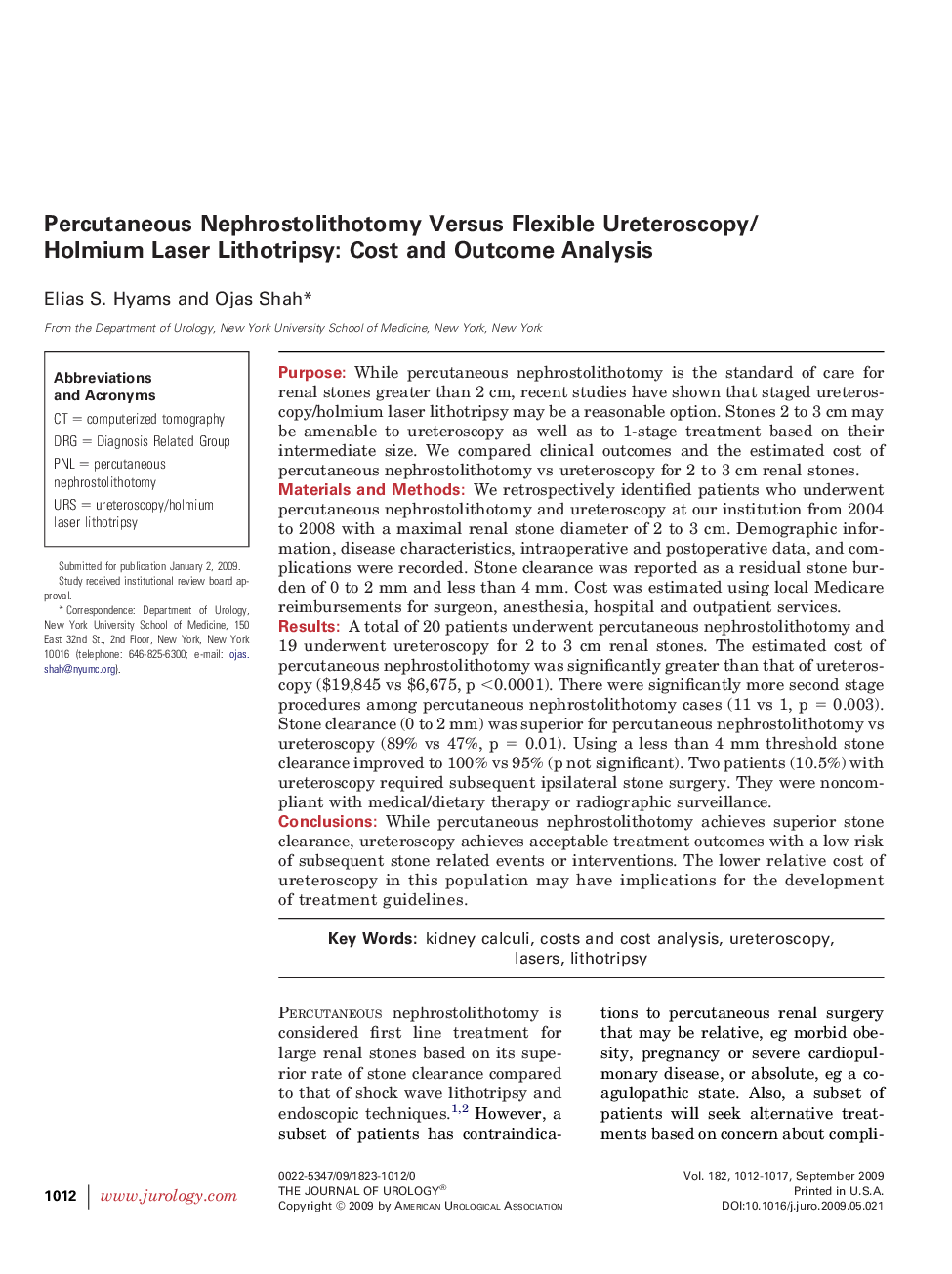| کد مقاله | کد نشریه | سال انتشار | مقاله انگلیسی | نسخه تمام متن |
|---|---|---|---|---|
| 3869070 | 1598975 | 2009 | 6 صفحه PDF | دانلود رایگان |

PurposeWhile percutaneous nephrostolithotomy is the standard of care for renal stones greater than 2 cm, recent studies have shown that staged ureteroscopy/holmium laser lithotripsy may be a reasonable option. Stones 2 to 3 cm may be amenable to ureteroscopy as well as to 1-stage treatment based on their intermediate size. We compared clinical outcomes and the estimated cost of percutaneous nephrostolithotomy vs ureteroscopy for 2 to 3 cm renal stones.Materials and MethodsWe retrospectively identified patients who underwent percutaneous nephrostolithotomy and ureteroscopy at our institution from 2004 to 2008 with a maximal renal stone diameter of 2 to 3 cm. Demographic information, disease characteristics, intraoperative and postoperative data, and complications were recorded. Stone clearance was reported as a residual stone burden of 0 to 2 mm and less than 4 mm. Cost was estimated using local Medicare reimbursements for surgeon, anesthesia, hospital and outpatient services.ResultsA total of 20 patients underwent percutaneous nephrostolithotomy and 19 underwent ureteroscopy for 2 to 3 cm renal stones. The estimated cost of percutaneous nephrostolithotomy was significantly greater than that of ureteroscopy ($19,845 vs $6,675, p <0.0001). There were significantly more second stage procedures among percutaneous nephrostolithotomy cases (11 vs 1, p = 0.003). Stone clearance (0 to 2 mm) was superior for percutaneous nephrostolithotomy vs ureteroscopy (89% vs 47%, p = 0.01). Using a less than 4 mm threshold stone clearance improved to 100% vs 95% (p not significant). Two patients (10.5%) with ureteroscopy required subsequent ipsilateral stone surgery. They were noncompliant with medical/dietary therapy or radiographic surveillance.ConclusionsWhile percutaneous nephrostolithotomy achieves superior stone clearance, ureteroscopy achieves acceptable treatment outcomes with a low risk of subsequent stone related events or interventions. The lower relative cost of ureteroscopy in this population may have implications for the development of treatment guidelines.
Journal: The Journal of Urology - Volume 182, Issue 3, September 2009, Pages 1012–1017